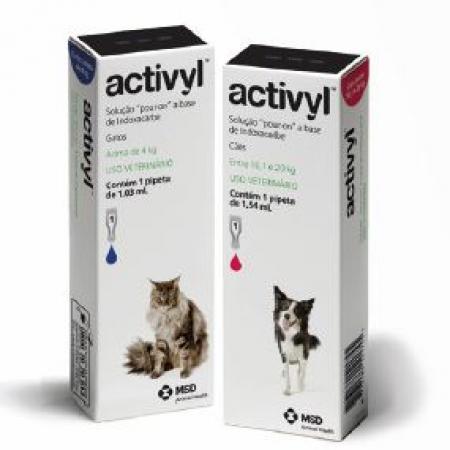Bee Venom Allergy
“London” Labrador treated at Pasadena clinic

At the conclusion of a morning walk, pet owner Leza Raley-Labrador picked up “London” (pictured above) in her arms to go upstairs and noticed a honey bee on the bottom of her paw. She quickly brushed it off but within minutes London was vomiting, had diarrhea and started to lose consciousness. Leza and her husband rushed her to emergency and learned that London was going into anaphylaxic shock.
After many hours and many tears, they were told that London would survive and was able to go home.
About six months later, once again, London stepped on a dying bee. This time Leza was prepared: she had an “EpiPen” (injectable epinephrine) to counter the reaction which would provide valuable time to transport London to the emergency room. Leza says that medication and an IV were administered to London, but her heart slowed to an unnatural rate. After being released from emergency, Leza had London’s heart rate monitored almost daily which returned to almost normal, although still on the low side.
Family veterinarian Dr. David Beltran of Veterinary Healthcare Center in Monterey Park, CA referred London to Animal Dermatology Clinic – San Diego to see Dr. Mona Boord.
Dr. Boord performed intradermal testing and found that London was highly allergic to yellow jacket and honey bees.
After the test, Dr. Boord arranged for immunotherapy treatments at Animal Dermatology Clinic - Pasadena under the care of Dr. John Angus. There, London received weekly injections of the serum that would desensitize her to bee venom.
Due to her high sensitivity to bee venom, London was given her injections at the clinic and then kept under the watchful eyes of the staff monitoring for any reaction. Each week, the injection strength was increased for a total of fifteen weeks.
London was tested again for bee venom and her reaction reduced significantly after her immunotherapy.
Injections are now administered monthly.
Says Leza, “We have decided to continue with London’s monthly appointments to manage her allergy and plan on doing so for life. We will test London again in November, to see where she is at.
I know London is in great hands and I am confident that one day she will be no longer be allergic to bees.”
Thanks to Drs Boord and Angus and the staffs of Animal Dermatology Clinics-San Diego and Pasadena for their successful management of London’s allergy problems! And thanks to London’s owners, Leza and Luis for sharing their story and photos.
Cat Travels 190 miles To Return Home
In early November 2012 owners Jacob and Bonnie Richter were at an R.V. rally in Daytona Beach, FL. when “Holly” their 4-year old tortoiseshell cat bolted from the vehicle. Despite immediate searching, they could not find her. Fireworks the next night might have spooked her further.
The Richter’s scoured the surrounding area, visited shelters and placed flyers but returned home cat-less. Two weeks later, workers at a restaurant who fed neighborhood cats in Daytona called and said they spotted a cat that looked like Holly.
Nearly two months later on New Year’s Eve, Barb Mazzola of Palm Beach, FL noticed a cat “barely standing” in her backyard so weak, it struggled to meow. Over the next week, Ms. Mazzola and her children fed and cared for Holly, eventually coaxing the cat into their home.
They took Holly, now renamed “Cosette”, to their veterinarian who found that despite her emaciated condition and worn pads, she was disease and injury-free. A microchip was detected, Ms. Mazzola says, “I just cried,” because Holly’s true owners were now known.
The big surprise was that Holly was found about a mile from her home. How she travelled nearly 200 miles to her own neighborhood is the mystery that will never be fully known.
Cars, predators, food and water (or lack of) were dodged in her amazing trip. Or did she hitch a ride and if so, how was the correct direction selected? Her worn paws certainly indicate that she walked a long distance.
The Richters say Holly was born to a feral cat roaming the mobile home park and Holly was born inside somebody’s air-conditioner. At about six-weeks old, Holly appeared on their carport, scars on her belly from when the air conditioner was turned on.
So perhaps Holly’s rough and tumble start gave her a genetic advantage of being a survivor. We’ll never know how she did it and Holly isn’t saying a word.
For some, bee stings more than just annoying
Who doesn’t flinch a bit when a bee buzzes into your personal zone? For many people a bee sting is an annoying occurrence, but for others, bee stings may be potentially fatal. According to information from the Boston Children’s Hospital/Harvard Medical School:
• About two million people in the United States are allergic to bee stings.
• Three percent of children who are stung will experience allergic reactions.
• In the most severe cases, an allergic reaction to a bee sting can cause anaphylactic shock, requiring treatment with a shot of epinephrine.
• About 100 Americans die every year from bee stings.
Bee-sting kits are available for those who are highly allergic, but be sure you are able to administer a self-injection. A Medic Alert bracelet or necklace describing your allergy is also recommended.
Some pets can also have severe reactions to bee stings as well (see cover story). Both people and animals that are highly allergic to bee venom may be directed to undergo a series of injections which are different than epinephrine shots.
Epinephrine shots (EpiPens) are used for emergency situations when stung by a bee to allow time for transport to an emergency room. Often these auto-injectors will come in pairs in case another shot is needed en route to the hospital.
Immunotherapy shots of bee venom are a series of injections that will slowly introduce the venom into the body allowing to dramatically reduce or eliminate the allergic reaction by desensitizing the body of the allergen (venom). This treatment has been highly effective for those sensitive to bee stings.



